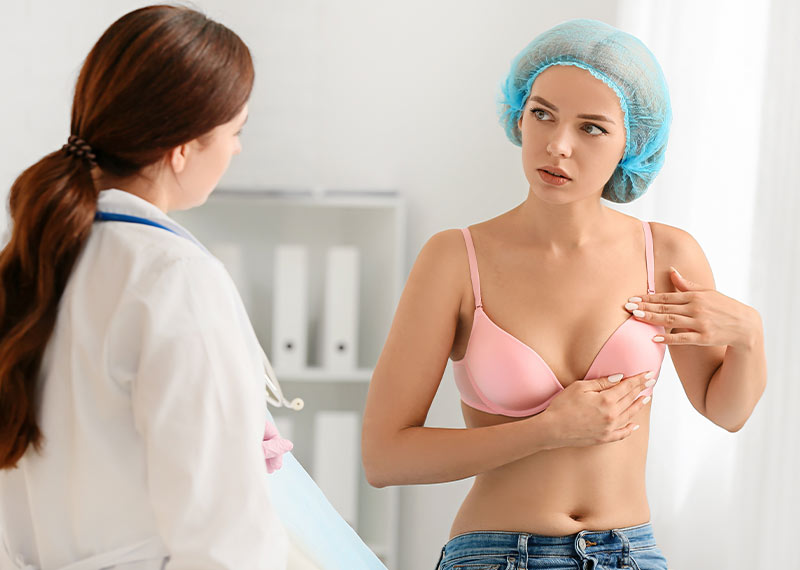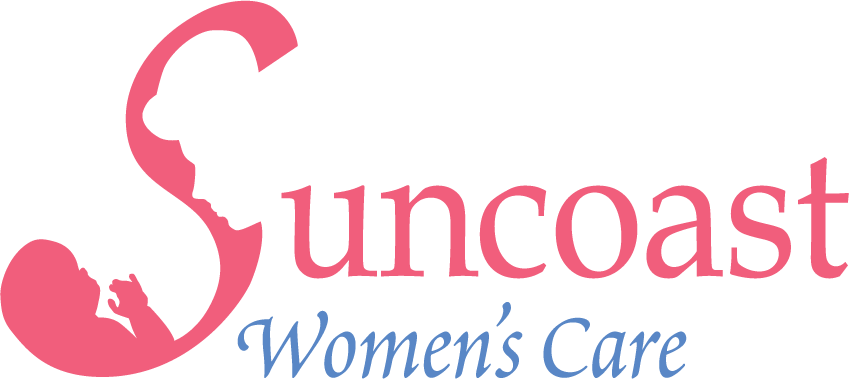Why You Should be Regularly Completing a Breast Self-Examination
October is Breast Cancer Awareness Month, a comprehensive time dedicated to empowering women with knowledge that can truly make a difference. One of the simplest yet most significant habits you can develop is the breast cancer self-check. Although it is not a substitute for professional screening, performing regular self-breast exams helps you become familiar with your own body and can lead to early detection of changes that may need medical attention.
At Suncoast Women’s Care, Dr. Wanda Torres encourages every woman to make breast self-exams a consistent part of their personal health routine. For patients across Trinity and Tampa, Florida, we believe that awareness, education, and proactive care are key to long-term wellness.
The Power of Early Detection
Breast cancer is still one of the most common cancers among women in the United States. According to the American Cancer Society, the average risk of a woman developing breast cancer during her lifetime is about 1 in 8. However, when detected early, the survival rate can exceed 90 percent.
That is why breast cancer awareness checks matter. Self-exams alone are not diagnostic tools, but they can be the first step in recognizing something unusual. The more familiar you are with the everyday look and feel of your breasts, the easier it becomes to notice when something changes.
Combining at-home breast examination with regular mammograms and clinical breast exams by your healthcare provider provides a more complete picture of your breast health.
How Do I Check Myself for Breast Cancer?
The process is simple and can be done in just a few minutes. What matters most is performing it consistently and following proper technique.
Here are five detailed breast self-exam instructions recommended by Dr. Torres and the team at Suncoast Women’s Care:
- Start by looking in the mirror – Stand with your shoulders straight and your arms on your hips. Look for any visible changes in your breasts, such as differences in size, shape, or symmetry. Notice if there is dimpling, puckering, redness, or swelling.
- Raise your arms overhead – Look again for the same signs. Sometimes, lifting your arms helps highlight subtle changes that may not appear in a relaxed position.
- Check for any nipple changes – Gently inspect for fluid leaking from either nipple, whether it is clear, milky, or yellowish. Unexpected discharge should always be discussed with your healthcare provider.
- Feel your breasts while lying down – Use the right hand to examine your left breast and the left hand for your right. With the pads of your fingers, move in small circular motions through the entire breast area, from the collarbone down to the top of the abdomen, and from the armpit to the cleavage. Apply light, medium, and firm pressure to feel different tissue depths.
- Repeat the process while standing or sitting – Many women find it easiest to do this in the shower when skin is wet and slippery. Move your fingers around the breast in a circular motion, paying attention to any thickening, lumps, or unusual texture.
For best results, try to do your self-breast exam at the same time each month. Hormonal changes during the menstrual cycle can cause temporary breast tenderness or lumps, so performing your exam a few days after your period ends is ideal.

Keeping Track of Your Findings
If you are new to self-exams, it can take a few months to understand what feels normal for your body. Journaling your results can help track patterns or identify gradual changes. Write down the date, any observations, and whether you noticed anything different from the previous month.
For women with a higher risk of breast cancer, such as those with a family history or certain genetic factors, maintaining consistent records can be especially valuable. It provides your doctor with detailed information that can guide further screenings, such as mammography, ultrasound, or MRI if necessary.
Understanding False Positives and Next Steps
It is important to remember that not all lumps are cancerous. Many women have benign cysts or fibrous tissue that can feel like lumps during an exam. Still, any new or unusual change should be discussed with your healthcare provider.
A false positive occurs when a self-exam reveals something that seems concerning but turns out to be noncancerous. While that can be stressful, it is always better to have clarity than uncertainty. At Suncoast Women’s Care, we encourage our patients to contact us if they discover anything worrisome. Our team will perform a thorough assessment, including reviewing your medical history, conducting a physical exam, and ordering imaging studies if needed.
Do not panic if you feel something unusual, but do take it seriously. Early evaluation can rule out issues or allow treatment to begin as soon as possible if something requires attention.
The Role of Medical Screenings
A breast cancer self-check is only one piece of the puzzle. The American Cancer Society recommends that women with an average risk begin having mammograms every year at age 40. Those with a higher risk profile may need earlier or more frequent screenings.
Your healthcare provider may guide you on when to schedule your mammograms and whether additional imaging is appropriate. At Suncoast Women’s Care, we help coordinate your complete breast health plan, from preventive screenings to personalized follow-up care.
Building a Habit That Empowers You
Developing the habit of regular breast cancer awareness checks is about more than just prevention; it is about empowerment. You take an active role in understanding your own body and supporting your long-term health.
Try setting an alert or a reminder on your phone or marking your calendar to perform your at-home breast examination once a month. It takes only a few minutes but can make a significant impact over time.
By combining professional screenings, routine self-checks, and open communication with your care team, you can protect your health with confidence.

Comprehensive Women’s Health at Suncoast Women’s Care
At Suncoast Women’s Care, we are proud to serve women in Trinity and Tampa, Florida, offering gentle, personalized, and comprehensive care for women by women. Whether you need routine gynecologic exams, prenatal care, or guidance on preventive health, our compassionate team is here to make sure that every patient feels heard, respected, and empowered.
If you have questions about how to perform a self-breast exam, notice changes during a check, or simply wish to discuss your breast health, we are here to help. Early detection saves lives, and education is the first step.
To schedule a consultation or learn more about breast cancer awareness, contact Suncoast Women’s Care today. Together, we can make breast health a lasting priority.
Review
Review our Trinity location
Review our Tampa location
Review our Countryside location
